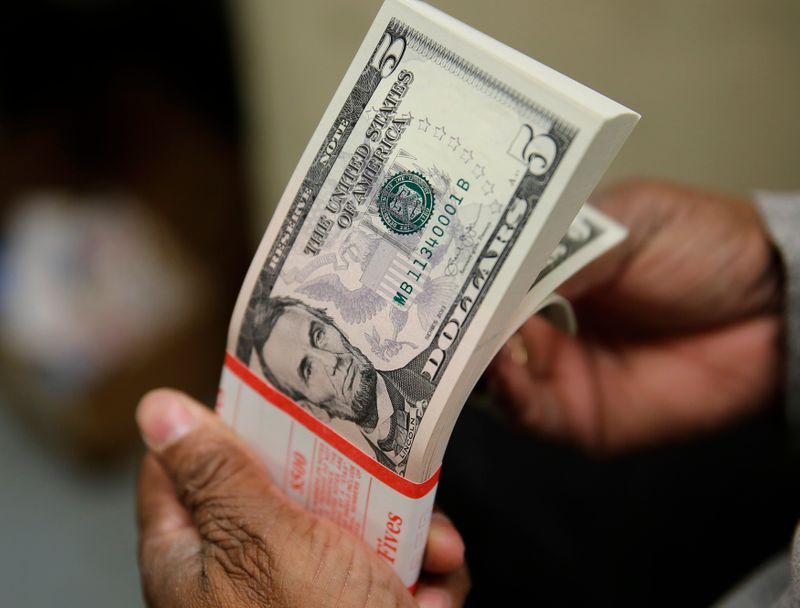By Kevin Buckland
TOKYO (Reuters) – The safe-haven dollar languished near an almost one-week low against its major peers on Thursday as investors adopted a more optimistic stance about the global economic outlook, despite the rapid spread of the Omicron coronavirus variant.
The dollar index, which measures the currency against six rivals, stood at 96.111, not far from the overnight low of 96.020, touched for the first time since Dec. 17.
The risk-sensitive Australian dollar was steady at $0.72125 following Wednesday’s 0.86% surge.
Sterling was little changed at $1.33515 after a 0.63% rally.
Risk appetite has improved since Monday, when markets were rattled by government restrictions relating to the spread of Omicron.
However, data on Wednesday showed U.S. consumer confidence improving more than expected in December, suggesting the economy would continue to expand in 2022 despite a resurgence in COVID-19 infections and reduced stimulus spending.
There was also encouraging news from a South African study, which suggested reduced risks of hospitalisation and severe disease in people infected with Omicron compared with the Delta strain.
The euro was about flat at $1.13325 after a 0.33% overnight advance.
The dollar was little changed at 114.16 yen – another safe-haven currency – holding close to an almost one-month high from Wednesday at 114.37.
Many analysts expect the dollar to strengthen in coming months after a hawkish tilt this month at the Federal Reserve put an interest-rate increase in March on the table, setting the U.S. central bank apart from more dovish peers in Europe, Japan, Australia and elsewhere.
Money markets currently price better than 50-50 odds for a hike by the March policy meeting.
“Ongoing data strength should help bolster Fed pricing, particularly amid reports that Omicron appears to be leading to fewer hospitalisations,” TD Securities strategists wrote in a report.



